How to Consistently Deliver Content That Makes a Difference in Your Business
- Blas Giffuni
- Jul 23, 2024
- 3 min read
Updated: Jul 16
By now, most business owners realize that consistent content is a marketing must-have. It boosts engagement, builds brand awareness, and ultimately drives sales. But for small and medium companies alike, maintaining a steady flow of high-quality content can feel like a constant uphill battle.
In this short article I want to talk about how to overcome those struggles. We'll explore the key areas to focus on: launching your content strategy, consistently publishing, maximizing content reuse, and streamlining your overall process.
Your Content Process Stress: We've All Been There
Let's face it, creating consistent content comes with its fair share of challenges. Lack of time, limited resources, and a struggle to plan effectively are all too common hurdles for businesses.
Here are some methods we’ve implemented at Navigamo to reduce content stress:
Set S.M.A.R.T goals: Be Specific about what you want to achieve with your content. Make sure your goal is Measurable. Increased website traffic? Brand recognition? Setting Achievable goals is important to prevent team burnout. Keep your goals and ideas Relevant to your business needs. Finally, make your goal Time-bound; otherwise, your goals will become moving targets and will not be easily attainable. Clearly define your goals for focused content creation.
Know your audience: Who are you trying to reach? Understanding your ideal customer's needs and preferences is key to crafting content your audience cares about.
Once you’ve clarified your goals and audience needs, it's time to implement reliable systems for consistent execution. My team and I have used project management tools like Trello, Monday, and Clickup to schedule tasks, collaborate with team members, and keep everything on track.
Stop the Struggle: Create and Build from a Content Foundation
A strong content strategy thrives on a solid foundation. You need a content library that supports your business goals and includes evergreen content – pieces that remain valuable over time.
One way to organize your content ideas is to look at your company’s expertise in different areas. In the SEO world, these are called Content Pillars.
Pillars go beyond your products and services. For example, one of the content pillars for an eco-friendly clothing company might be sustainable practices in clothing manufacturing.
You can also divide content pillars into categories such as “how to” use the product, “everything about” this type of product, and “what is” this type of product.
Building Efficiencies: Work Smarter, Not Harder
Once you’ve started building a content library, think of ways to recycle the content you've produced and also of how to batch your content creation process to maximize efficiency. By the way, by “content” I don’t just mean blogs and written content but also multimedia like video and images.
If your marketing team went through the effort to create long-form content like a white paper, the good news is that it can be repurposed and distributed in many ways. Each paragraph could be shortened and simplified; it could become a blog post or a series of infographics and social media posts. Likewise, if you’re looking at several shorter forms of content, perhaps you can group them together in new ways to form a longer piece.
When sourcing images and creating videos to support your marketing efforts, batching is the name of the game. That’s why organizing your content ideas into categories is so important: it allows graphics creation in fewer sessions.
Here is your content efficiency recap:
Multipurpose your content: Turn a blog post into a video script or create social media teasers from a longer piece. Reimagine short content by combining it in new ways.
Image Generation: Instead of thinking of an image as a one-off, look at how you could use a whole series of similar or related images for a whole series of content around the same content topic or pillar.
Think Ahead: Stockpile high-quality images by scheduling photo shoots or using reputable stock photo platforms. Create a system for organizing images beforehand to save time.
Graphic Design Magic: Tools like Canva and Adobe Spark can help you transform written content into visuals and vice versa.
Content Operations: The Control Center
Now, let's look at your content "mothership" – your primary platform (a blog, YouTube channel, etc.). This serves as the hub, and other platforms like social media channels act as its support system.
For efficient operations, establish clear workflows for content creation, approval, and distribution. Each type of content plays a role in your overall strategy – ensure your messaging is cohesive across the board.
In Conclusion: The Power of Consistency
Building a strong content foundation, integrating it into your business strategy, and optimizing for efficiency are the cornerstones of consistent content creation. Remember, repurposing content saves time and resources, allowing you to deliver impactful content without burning out.
How we can help: If you’re starting from scratch and want to get your content strategy into high gear, or you already got started but need a boost, chat with us.






















